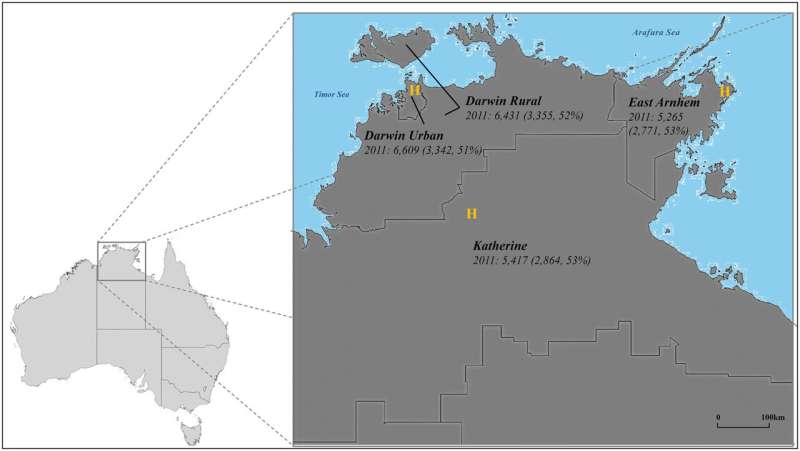This article has been reviewed according to Science X's editorial process and policies. Editors have highlighted the following attributes while ensuring the content's credibility:
fact-checked
proofread
Targeted lung health strategies needed in the Top End in Australia

New research published in the Medical Journal of Australia has investigated the burden of the chronic lung disease bronchiectasis among Aboriginal and Torres Strait Islander adults in the Northern Territory Top End for the first time.
Bronchiectasis is a lung condition where the walls of the airways widen and become thickened from inflammation and infection.
Bronchiectasis is Australia's third most common chronic respiratory disorder, and is most commonly found in Indigenous populations in remote northern communities, with a devastating impact on life expectancy
The researchers analyzed demographic data between 2011 and 2020 for Indigenous people with bronchiectasis in the four Top End Health Service health districts—Darwin Urban, Darwin Rural, East Arnhem, and Katherine—as well as any individual communities with ten or more active bronchiectasis cases.
In that period, 459 people were diagnosed with bronchiectasis via chest computed tomography (CT) scan, with an estimated prevalence of 19.4 bronchiectasis cases per 1,000 residents.
The prevalence of the condition increased with age, peaking at 45.7 per 1,000 people aged 50–59 years.
By 30 April 2023, 195 people with bronchiectasis recorded in the study had died (42.5%), at a median age of 60.3 years.
The researchers say targeted efforts are needed, calling for further investigation into the social, demographic and clinical determinants that contribute to high prevalence of bronchiectasis among Indigenous Australians in order to develop effective interventions and improve respiratory health outcomes.
"Targeted efforts are needed to overcome intrinsic and extrinsic barriers that impair access to specialist health care, and may account for marked differences between Indigenous and non-Indigenous people in bronchiectasis prevalence," writes Dr. Subash Heraganahally and colleagues.
Professor Heraganahally is a respiratory and sleep medicine specialist with the College of Medicine and Public Health at Flinders University, Darwin.
"Moreover, improving cultural sensitivity, education and awareness, early detection and diagnosis, treatment adherence, multidisciplinary care, preventing infections, smoking cessation, pulmonary rehabilitation, research and data collection, telehealth and telemedicine, and community involvement are all critical," Dr. Heraganahally and colleagues wrote.
"Bronchiectasis among Indigenous adults in the Top End of the Northern Territory, 2011–2020: a retrospective cohort study" has been published in the Medical Journal of Australia.
More information: Claire Gibbs et al, Bronchiectasis among Indigenous adults in the Top End of the Northern Territory, 2011–2020: a retrospective cohort study, Medical Journal of Australia (2024). DOI: 10.5694/mja2.52204



















